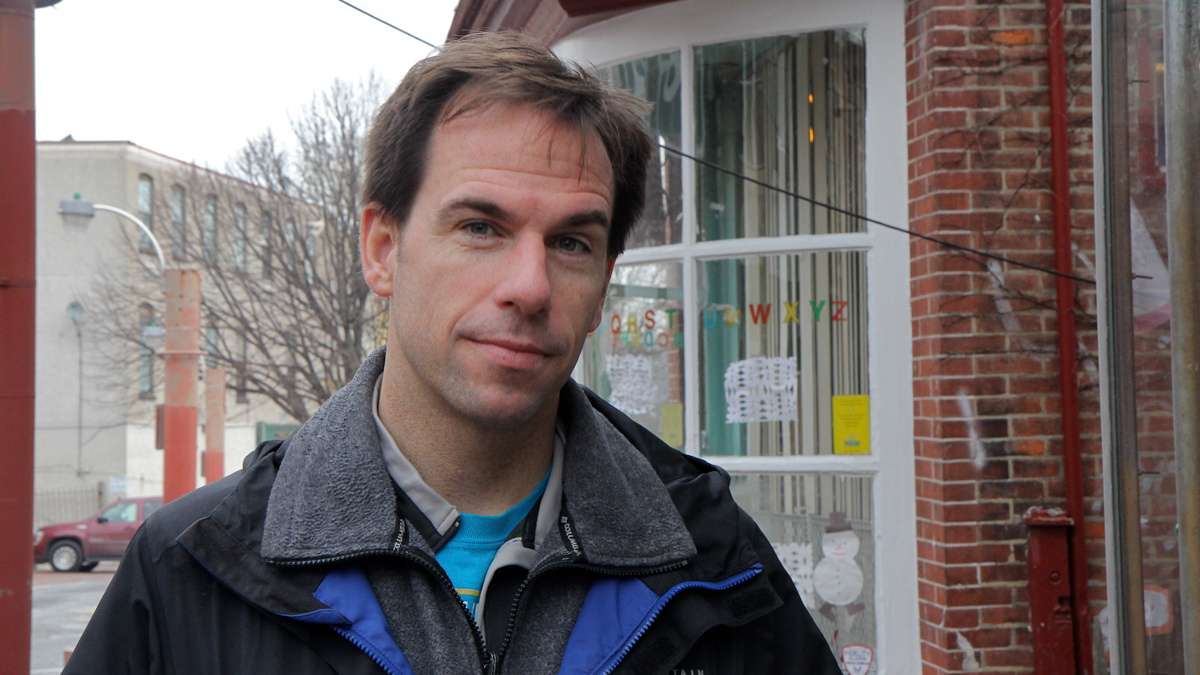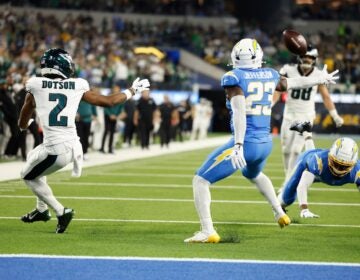Zoe Strauss’ ‘Sea Change’ photos tell unintended story of climate change
ListenHaverford College is exhibiting the work of Zoe Strauss, the renowned Philadelphia photographer who was surprised to discover an unintended commonality in her images of recent disasters.
At first, Strauss’ pictures look like photojournalism. She visited the sites of three environmental disasters — Hurricane Katrina, Superstorm Sandy, and the BP oil spill in the Gulf of Mexico — but not to document the initial event. She arrived in Mississippi, at the Jersey Shore, and in Texas a few weeks afterward.
“I was compelled to photograph and to see, but did not want to go as a journalist, in the moment to get what was happening,” said Strauss. “I didn’t want to do it at the height of crisis. I didn’t want to do it when people really needed help with their day-to-day stuff.”
The more than 100 images of “Sea Change,” now on view at Haverford College’s Cantor Fitzgerald Gallery, are scrambled together with no effort to differentiate when or where each shot was taken.
There are clusters of images showing rooms destroyed by flooding and mold; another cluster display rainbow oil slicks on water. There is no way of knowing if these were caused by Katrina, Sandy, or the BP spill.
The point is: all these catastrophes reflect how we live now. Strauss is making a broader statement, about living in a time when a drive for oil and the consequences of its consumption create more frequent ecological disasters.
At the time she took the shots, she did not recognize she was taking pictures of climate change. It was only later, looking through her archives, that she divorced herself from the original impulse to take the pictures. She began to see unintended connections between the images, tracing the effects of climate change.
“It was remarkable that I had been in the middle of it, and not seen that this is what it is,” said Strauss. “Possibly because it’s unbelievably depressing, and I don’t want to think about it. I’m in denial about it. Honestly, who does? Who wants to think — for people our age – about the very quick change that will happen to us, in terms of where we live and the possibilities coming up?”
Unlike Strauss’ best-known images, there are very few portraits in this show. She favored images of ruined landscapes, implying the presence of people.
She found an odd kind of visual poetry in spaces between images. Some pictures show billboards that had been stripped of their vinyl signage by severe storm winds. Those same winds ripped roofs from houses. Homeowners used the vinyl signage as impromptu roof patches until permanent repairs could be made.
In that impromptu roof patch, Strauss sees humanity wrapped in oil: if petroleum is the root cause of climate change and extreme weather events, consider its temporary fix – vinyl – is itself a petroleum product.
WHYY is your source for fact-based, in-depth journalism and information. As a nonprofit organization, we rely on financial support from readers like you. Please give today.

















